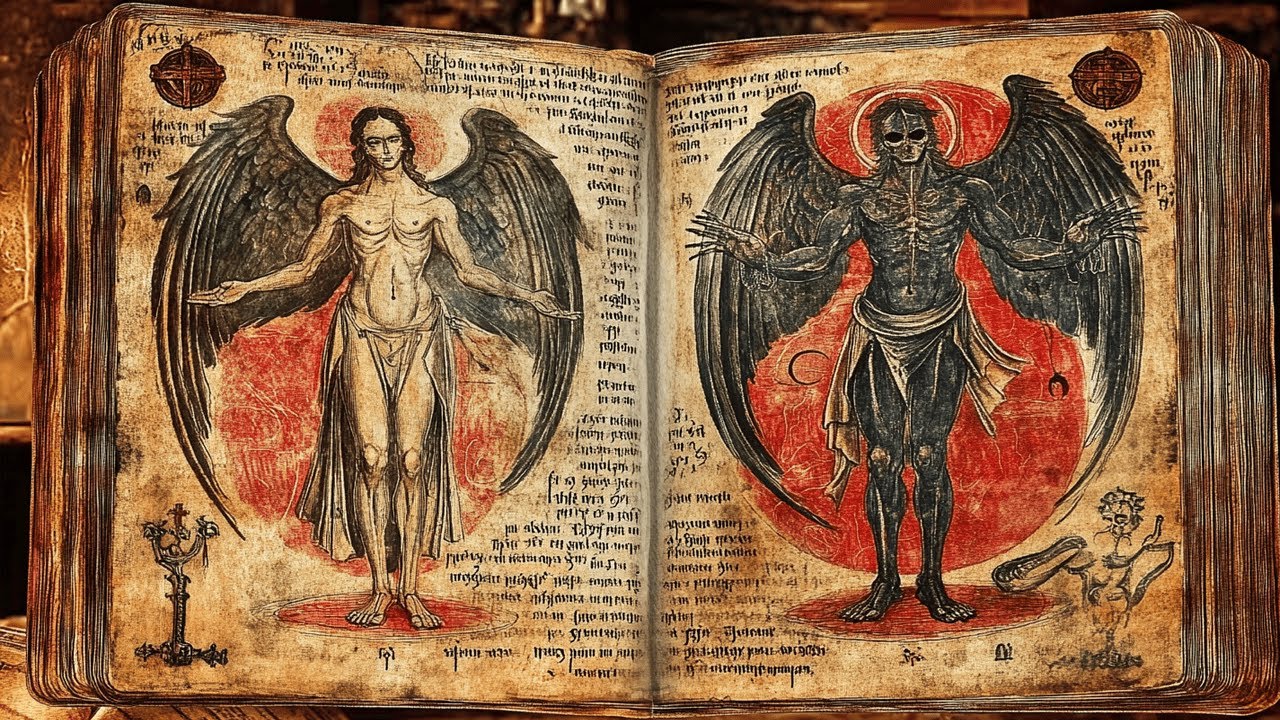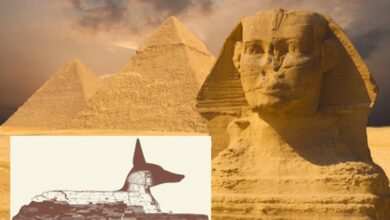Most TERRIFYING Books That Shatter The Foundations Of Belief

If you’ve ever wanted to delve into the dark mysteries of ancient grimoires, you’ve come to the right place. Today, I’m going to introduce you to some of the most mysterious books that promise every kind of magic known to man. One even involves a modern-day murder!
Let’s start with the magical texts associated with King Solomon – a biblical figure known for his wisdom, wealth, and… spirit-calling. Of the mystical books attributed to him, the most famous is *The Key of Solomon. It’s one of the oldest and most influential magical texts, with spells ranging from cursing your enemies to shutting down your neighbor’s Wi-Fi signal (just kidding!).
But there’s another lesser-known book, *The Magical Treatise of Solomon*, which is considered a precursor to *The Key of Solomon*. Though less well-known, this book contains ancient magical knowledge, even bearing an impressive name: *Little Key of the Whole Art of Hydromancy*. It dates back to the 15th century and was compiled from ancient Greek manuscripts, carrying a Byzantine mystique.
Legend has it that Solomon wrote the book for his son and told him to hide it in his tomb. Eventually, a Babylonian philosopher found it after a vision from an angel. However, scholars believe that the document appeared in the Middle Ages, which means it was about… 2,500 years before Solomon’s time. Regardless of its origin, the book is filled with spells such as summoning spirits, purifying oneself before performing a ritual, and even a spell to prevent someone from hunting wild animals.
If you enjoy learning about the history of magic or simply want to laugh at rituals like mystical bathing, then *The Key of Solomon* and *The Magical Treatise of Solomon* are worth checking out.
—
Aside from King Solomon, there is another mystical figure associated with grimoires – Saint Cyprian. But this is a complicated story about two very different people with the same name Cyprian.
The first is Saint Cyprian of Carthage, one of the most important figures in the African Church since Saint Augustine. Born into a wealthy family around 190 AD, he lived a life of luxury before converting to Christianity at the age of 56. Within a few years, he had become a bishop and was accompanying Pope Cornelius against the heretic Novatian (whose name sounds like the villain in a medieval novel!).
When Emperor Valerian began persecuting Christians, Cyprian was forced into hiding, but was eventually executed in 258 AD, becoming a martyr.
But then there was another *Cyprian* – Cyprian of Antioch – who was said to have been a pagan magician before his conversion. Legend has it that he wrote a legendary grimoire: *The Book of St. Cyprian*, a sort of Catholic *Necronomicon*. This book, with Portuguese and Spanish editions, contained everything from treasure-finding, love spells, summoning spirits, to exorcisms.
In Portugal, the *Book of Cyprian* combined elements of Iberian magic with African spiritual traditions. Despite the Catholic Church’s strong opposition, the book has survived for centuries, making people wonder: Would you dare add this witch book to your reading list?
—
There’s also the thrilling story of *The Black Books of Elverum*. In the 1970s, a Norwegian woman named Mary Rustad discovered two handwritten grimoires in her ancestral home. Surprisingly, her family was not just ordinary farmers but was also involved in a 17th-century witch trial!
These books contain spells to summon demons, curse enemies, and even strange spells like how to deal with thieves… who dare to defecate in your house before robbing! (Confusing, right?)
Another oddity in the book is how to identify witches: If you suspect someone, just stand near the church bell at night. According to ancient beliefs, witches would bite bells to obtain metal powder for their spells. What a strange form of testing!
Now, Mary Rustad’s books have been published in a single edition – *The Black Books of Elverum*. This is not only an occult document but also a window into the ancient beliefs of the Norwegians.
—
Another terrifying grimoire is *The Grand Grimoire*, also known as *The Red Dragon* or even *The Gospel of Satan*. This book is said to contain instructions for summoning demons and making soul-selling pacts.
Legend has it that it was written by a man possessed by Satan, but historians believe it originated in the 16th century and became popular in the 18th century. Today, the original copy of the Great Key is believed to be kept in the Vatican’s secret archives – which may hold more secrets than we think!
The book also includes instructions on how to “spank” Lucifer if he gets too unruly – using a wand called the Blasting Rod. Sounds more like a pet training method than a summoning spell!
**The Ancient Gods and the Necronomicon’s Mysteries**
The ancient gods represent chaos and destruction, led by Tiamat, while the High Gods, led by Marduk, imprison them. The story seems very similar to H.P. Lovecraft’s Great Gods vs. the Ancient Gods, which is why many critics have suggested that Simon simply took the structure of the Cthulhu mythos and dressed it in ancient Mesopotamian garb. Most scholars and occultists consider the *Simon Necronomicon* to be a brilliant hoax. Even those who were present in the occult world at the time of its publication admit that it has always been known to be a forgery.
However, grimoires always borrow from older sources – that’s their nature. Even if the *Necronomicon* is a fake, it is still a genuine magical book, like the *Key of Solomon* or the *Sixth and Seventh Books of Moses*. Whether real or not, the *Simon Necronomicon* has become part of a real-life murder case. Rod Ferrell, a member of a youth gang calling itself the “Vampire Clan” in Murray, Kentucky, claimed to be a 500-year-old vampire named Vago. But when the game turned bloody, Rod and his gang murdered a Florida couple in 1996. Prosecutors argued that Ferrell’s obsession with black magic stemmed from the *Simon Necronomicon*, which was used in demonic rituals and sacrifices. Rod was initially sentenced to death but was later commuted to life in prison without parole.
The *Simon Necronomicon* remains one of the most controversial and infamous magical books of modern times. It has it all – Mesopotamian gods, Lovecraftian influences, horror, black magic, even murder. But please don’t try the Tiamat summoning ritual… just to be sure!
—
**The Book That Shaped the History of Magic – The Discovery of Witchcraft**
In the 16th century, a book appeared that was intended to disprove witchcraft, but instead became the go-to handbook for magicians for centuries to come. It was Reginald Scot’s *The Discovery of Witchcraft*, one of the first books on magic written in English, published in 1584. Although it wasn’t intended to spread supernatural knowledge, it did exactly that. Today, this infamous book remains in the Library of Congress, despite efforts to erase it from history.
The book’s key points were that it claimed that witches did not exist, that magic was a trick of the eye rather than magic, and that witch hunts were an irrational hysteria. In the 16th century, these ideas were considered insane. When Scot dismissed witchcraft as superstition, it so angered King James VI of Scotland that he wrote a rebuttal called *Daemonologie*, which justified witch trials and executions. It is rumored that James ordered all copies of *The Discovery of Witchcraft* to be burned.
Despite its controversy, the book was influential for several reasons. Not only was it one of the first books to describe magic and witchcraft in detail, but it also revealed the techniques of stage magic. Scot, a learned Englishman, did extensive research and quoted from many sources, including Agrippa and John Dee. He explains how to perform tricks like fake beheadings, piercing the head with a needle without injuring it, and “witchcraft” methods like cursing crops and making pacts with the devil.
Although Scot wrote the book to expose hoaxes, it instead became a guide for magicians for centuries. Books like *Hocus Pocus* and *The Juggler’s Oracle* were both inspired by it, and it helped shape the modern art of magic. Scot died in 1599 without seeing his book reprinted in his lifetime. It was not reprinted in England until 1651, long after the witch-hunting craze had died down. 435 years later, the book still exists and can be read for free online.








